Articles, Sunday Island
The difference between Australian Opal and Ethiopian Opal
An introduction of Opals
Opal is one of the gemstones always thrilling and never failing to amaze the gemstone hunters, so to speak. Why is that so? Well, it is magnificent because of its famous play-of-color, a spectrum of colors originating on a background of a prominent color. The background’s color is created due to the immersed substances between the silica spheres since opal is essentially a form of hydrated silica.
Nevertheless, no one wants to analyze the chemical reactions that happen on the inside (although chemistry is always the key of certain things). We all want to grasp the outside and rejoice at its look and feel. But, before we do that, we have to get the opal. Although that may sound pretty straightforward, every search for a genuine opal would end up with a new choice – Ethiopian opal or Australian opal? Opal newbies may think it is just a trend based on origin, but actually, the two of the opal varieties really differ.
Meet the Ethiopian opal
Originating in Wollo, Ethiopia, commonly known also as the Welo opal (mostly because of spelling), is a type of the most sought-after opal in the world. Wollo is the home of both common and precious opals, which bring us to a new crossroad. Common opal is more neutral regarding the look, meaning its glow is uniform and doesn’t bring much of a color spectrum to the gem. Sure, this one is great for a classic, vintage and minimal look. But, for the “more is more” fans out there, there is the rare, precious opal, bringing your vivid, colorful dreams come true in one single gemstone.
Ethiopia is the home of other opal varieties too. For example, the fire opal is definitely one of the most astonishing gems (not only opals) out there, dazzling with its fierce attitude, reminiscent of a phoenix’s egg.
Opals shown in the image above are natural Ethiopian Opals that are used for Oval Ethiopian Opal Ring – Clara
But, probably the most prominent feature of the Ethiopian opal is that it is hydrophane. Yes, it is associated with water. Being hydrophane means that when the opal is immersed in water, it temporarily changes its color, light and transparency. Some of the hydrophane opals can increase their mass by 15% when contact with water is made. But, the absorbed water gets out within a few days (weeks) time, the same way it got in. Therefore we do not recommended for any opal to be immersed in water whatsoever.
Meet the Australian opal
This is the most common opal found in the world, with Australia being one of the first discovered opal sources. As with similar kinds of goods, conquering the market first managed to skyrocket the prices for this variety of opal. After this one came the Ethiopian, Mexican and more opal varieties and origins. But, due to those simple economy laws, Australian opal still is the most expensive opal, even to this day.
Quite the opposite of the Ethiopian opal, the Australian opal is being found deeper in the ground, meaning it contains more water than the Ethiopian and it is not hydrophane.
The verdict
So, the question is – which opal to choose? There is a phenomenon known as crazing, which causes small cracks to appear in the opal when it is damaged through time. That is why it is strongly advised that neither Australian nor Ethiopian opal are exposed to intense physical activities.
But now on the other side of the judgment – the price. Although both the Ethiopian and Australian opal are SiO2·nH2O (which is hydrated amorphous silica), their prices differ way too much due to the fact that Australian opal has more tradition and was discovered a long time before the Ethiopian. The truth is, all of the opals are unique and there isn’t a single one that has a duplicate to be found in nature. Therefore, the high price of the Australian opal isn’t justified and we give the advantage to the Ethiopian opal, which also has astonishing play-of-color nowhere to be found.
Ethiopian opal rings from Sunday Island
The picture above is our Vintage Inspired Opal Ring – Annabelle in solid 14k rose gold, you can find more Ethiopian rings here: Teardrop Opal Halo Ring – Arabella Oval Ethiopian Opal Ring – Clara
Asutralian opal rings from Sunday Island
The following image is our Oval Australian Opal Ring – Lydia in solid 14k rose gold. Take a look at our other Australian opal rings: Heart Shape Opal Ring – Melissa Oval Australian Opal Ring – Marielle
Taking care of your Ethiopian opals
Ethiopian Opal is a delicate stone that requires the wearer to take care of it properly. They are considered hydrophane opals and have the ability to adsorb water or liquids. A contact with water, chemicals, oil or heat may result in a discoloration or a permenant damage. Please do not wear your opal jewelry while cooking, washing hands, taking showers, swimming or any physical activities that will put the stone at a risk of damaging. After every wear, the best cleaning method for Ethiopian opal jewelry is to use a clean, soft, dry microfiber cloth to gently remove dirt, residue, and oils.
Taking care of your Australian opals


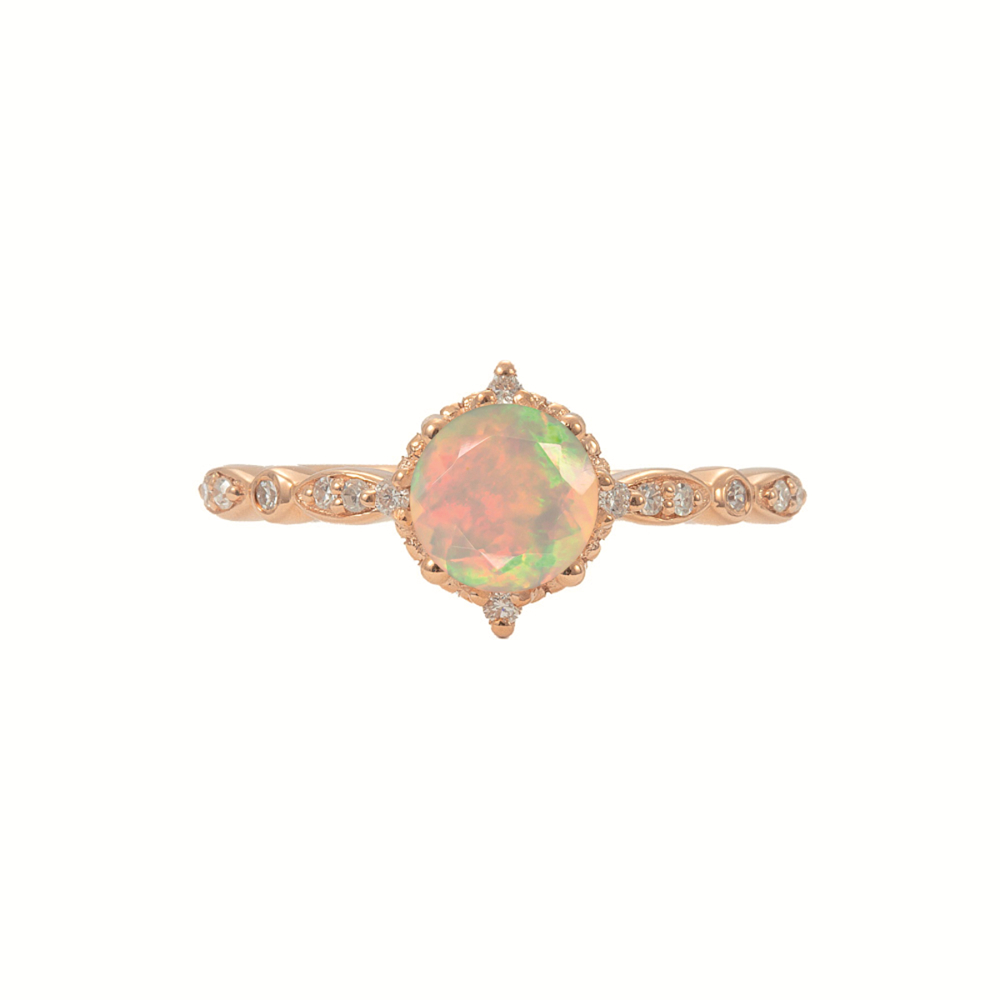
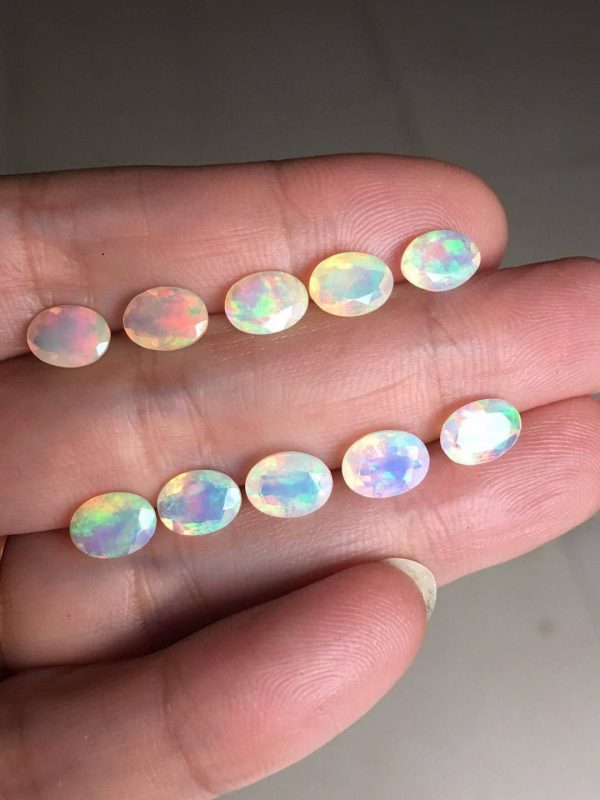
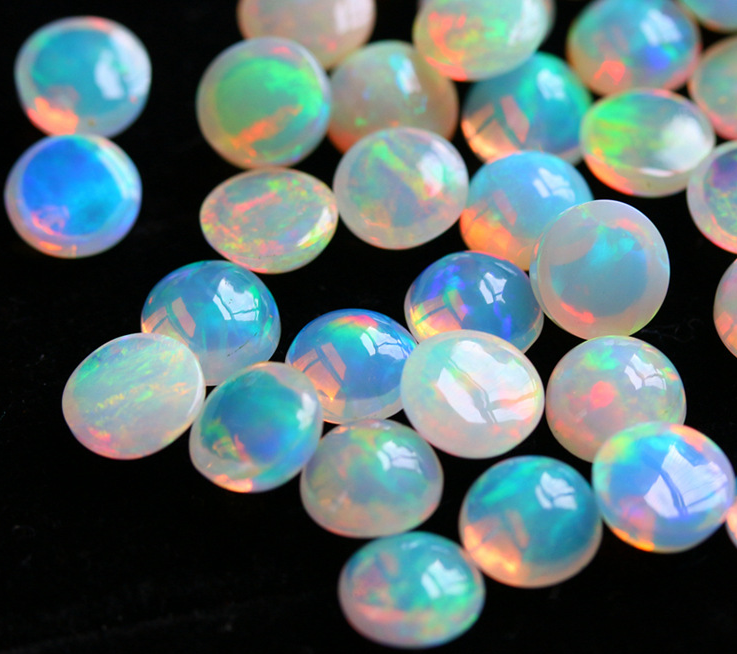
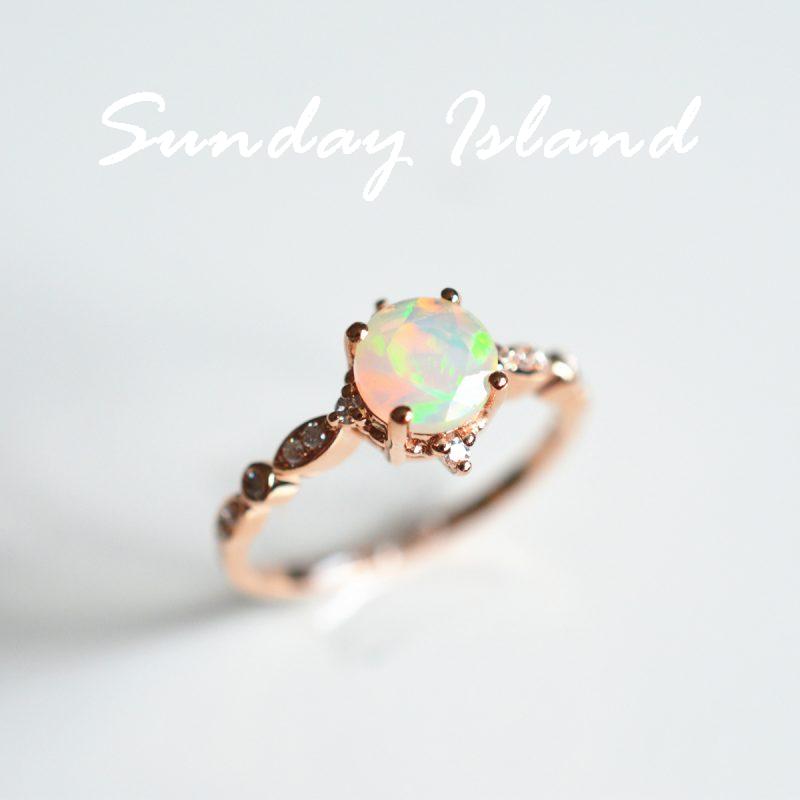
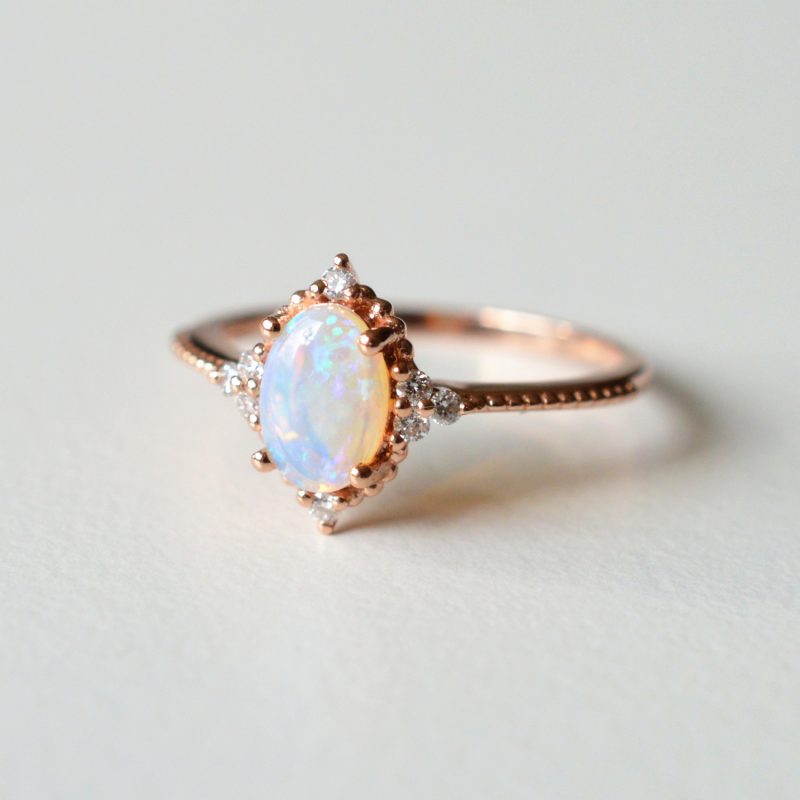
Very informative.
Thank you.
Very interesting and informative, thank you
Notice: Australian Opal will not take on the color of different liquids “permanently” like Welo Opals can!
Two points in response, 1: Australian opal is not found deeper than Ethiopian and therefore contains more water. Welo (Ethiopian) opal is located literally multiple hundreds of feet below the plateau, almost all volcanic opal that is non- hydrophane is extremely unstabe and will crack quickly (All commercial Ethiopian opal is porous hydrophane).
The deepest Australian opal has historically been about 120 feet but the average is about 30-50 feet in depth continentally, and the retention of water in the structure is due to the ‘quality’ of host rock weathering and resulting residual mineral salts infused in the material. Generally the more pure (well filtered) the host rock and opal is the more long term stability regardless of water content.
2: The price point of Australian opal is arguably justified as a large proportion from high quality fields such as Andamooka, Old Lightning Ridge nobbies, Coober Pedy’s Olympic, 7,8,9,10, 23 Mile, Opal Valley, Allans Rise, Opal Ridge etc, much of White Cliffs and Mintabie produced gems that are practicably glass, meaning they are non hydrophane, super stable heirloom quality gems that will not absorb water, oils, perfume or soaps etc, will not craze or crack naturally, thereby making them an objectively superior gemstone.
I have also read elsewhere that the Australian opal market is ‘controlled’. I don’t see how this is possible with thousands of small companies and operators finding small to large parcels and selling in many different ways and on many different platforms. It is actually one of the most freely unregulated markets on earth!
Show me an Ethiopian black opal, or an Ethiopian pineapple opal. They have these in Australia.